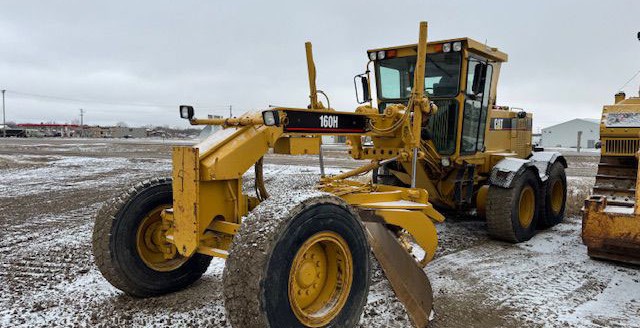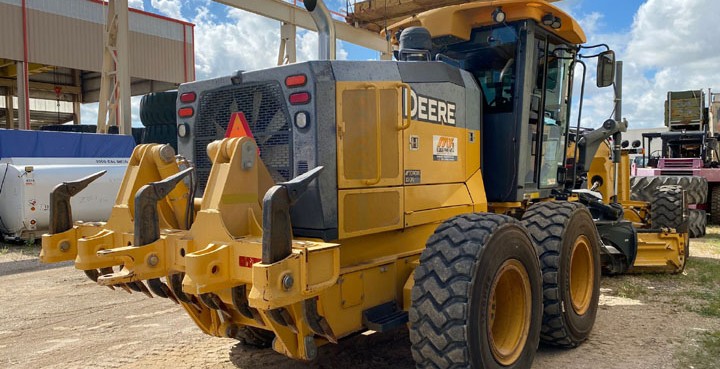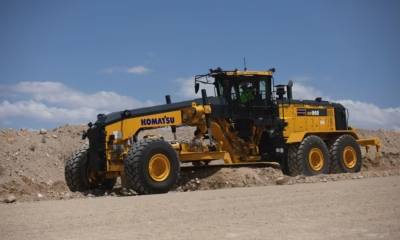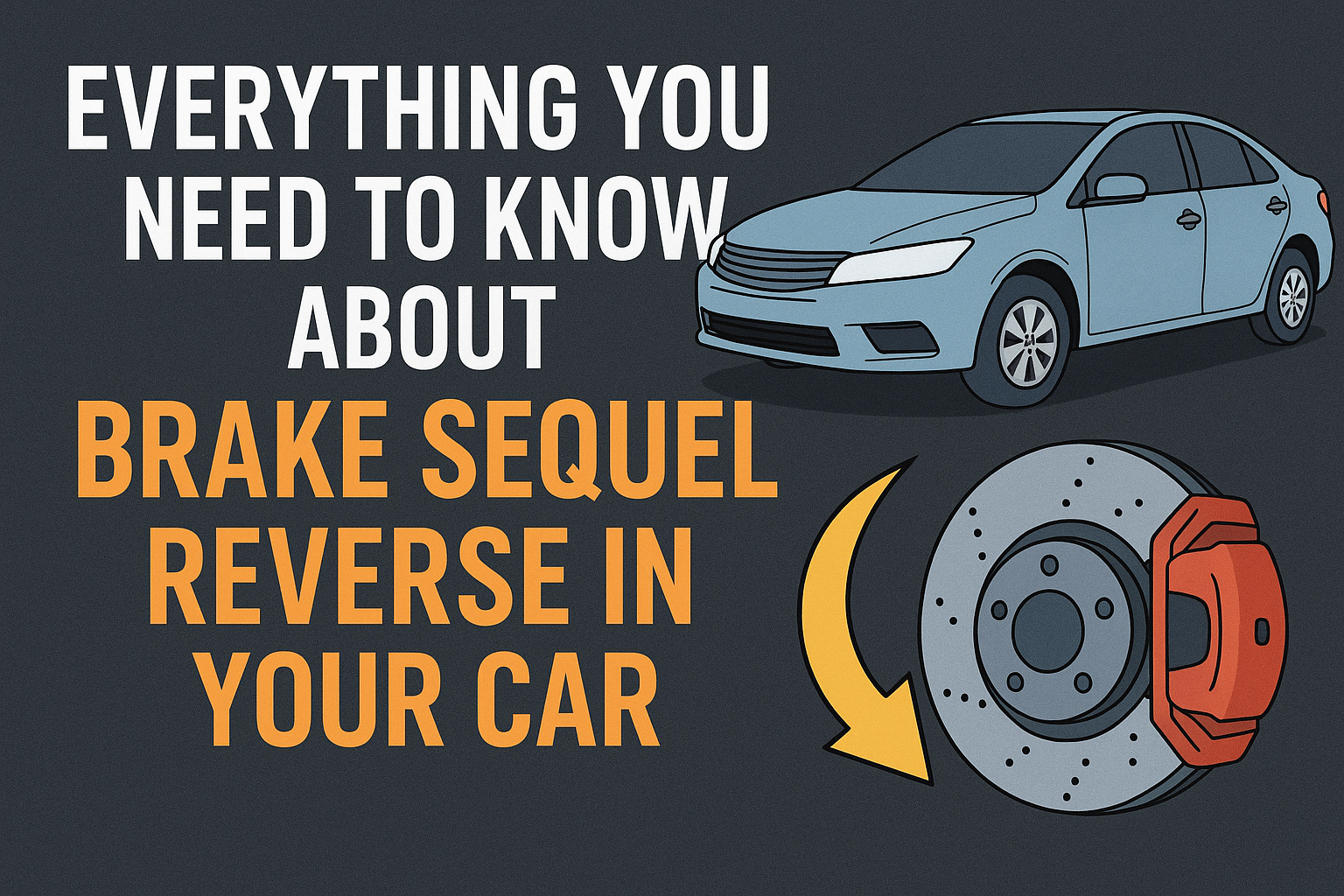Construction
Why Is Electrification Of Construction Equipment Necessary To Adopt?

Everywhere around the world, people have been talking about the electrification of vehicles and construction equipment. The enthusiastic approach to it shows that shortly the entire industry of auto and equipment will be electrified. Let’s see what the future holds for us.
Well, for the equipment industry, it is high time to start switching to electric equipment so that your entire company can easily adopt the trend. The electrification of equipment is not only cost-effective and user-friendly, but a good addition to the environment as well. Due to a mix of cost savings, environmental concerns, and regulatory restrictions, the construction industry has seen a substantial shift in the adoption of electric construction equipment in recent years. The shift from conventional diesel-powered machinery to electric alternatives is gathering speed as emission rules become more stringent and sustainability becomes a top priority for enterprises globally. Even while the advantages seem good, there are obstacles in the way of wider implementation.
Why you should shift to electrification?
Apart from all the good reasons, you should still think about why is it necessary to adopt an electric engine in construction equipment in place of a conventional diesel-operated one.
Environmental laws
Construction companies are forced to look at greener alternatives to typical diesel-powered gear as a result of governments throughout the world enforcing stricter emission laws. This one reason is enough to adopt electrification.
Cost Savings
Despite greater initial prices, electric equipment has longer-term operational fuel and maintenance costs. The adoption of electric machinery is additionally encouraged by government incentives like tax credits and carbon credits.
Noise reduction
Compared to diesel-operated earth-moving equipment, electric equipment runs more quietly, providing a potentially more comfortable and quieter work environment, especially inside or in densely populated regions.
Corporate Sustainability Goals
Making the transition to electric equipment a calculated step towards sustainability, many businesses are aligning with environmental, social, and corporate governance (ESG) goals.
Lower Operating Costs
Because electric equipment uses less fuel, requires less maintenance, and may have a greater resale value, it can save a lot of money in the long run.
Improved Operator Experience
Electric equipment runs quieter and vibrates less, which reduces operator fatigue and may increase productivity. Furthermore, the rapid torque of electric machinery offers more responsive and smoother operation.
Versatility and Adaptability
Electric equipment can be used in a range of indoor and outdoor locations, where noise and pollution regulations may be in effect. Applications where sparking is a concern, like indoor demolition, agricultural, and high-dust settings, are ideal for them.
What obstacles you should consider?
The benefits of electrifying the equipment are not the only thing to shift to this new trend. You must understand what are the hurdles you may encounter and you need to overcome them efficiently.
Initial Costs
Compared to diesel-powered machinery, electric construction equipment usually charges a higher purchase price, which may be a barrier for certain enterprises.
Infrastructure for Charging
To support the expanding fleet of electric cars, the switch to electric equipment requires the construction of a suitable infrastructure for charging. One major issue is a lack of charging infrastructure, especially on off-grid or distant construction sites.
Battery Limit
Battery limits persist, particularly for larger vehicles and applications, even though advances in battery technology have increased battery capacity and life. Furthermore, there are still issues with lithium-ion battery recycling and disposal.
Operational Considerations
Concerns regarding the power and torque capabilities of electric machinery relative to diesel machinery may arise, and operators may need training to become familiar with it.
How to overcome these hurdles?
Once you understand what are the hurdles being shifted to electrification, you also need to understand how to easily and efficiently overcome the issue. It is imperative to tackle the obstacles related to charging infrastructure if electric construction equipment is to be widely adopted.
Charging is streamlined and interoperability is facilitated by the use of standardized charging solutions, such as Level 2 AC chargers and DC fast chargers. Utilizing on-site generation technologies, such as solar or wind turbines, along with micro-grid systems can offer dependable power sources for electric equipment charging, hence decreasing reliance on the grid.
The constraints of battery life and charging periods can be addressed by investigating novel solutions like battery swapping stations and remote charging capabilities, especially for applications with high-demand cycles or restricted access to charging infrastructure.
How the future is looking?
With continuous developments and advances in battery technology, charging infrastructure, and alternative power sources like hydrogen fuel cells, the future of electric construction equipment seems bright. In the construction business, electrification is a big step toward lowering emissions and improving sustainability, but it is important to understand that there is no one-size-fits-all approach. The many demands of building applications will continue to be met in part by hybrid technologies, hydrogen combustion, and alternative fuels.
Let’s conclude
The industry has both opportunities and challenges as a result of the electrification of construction equipment. Stakeholders must work together to overcome obstacles like upfront expenses and charging infrastructure, but the long-term advantages of switching to electric machinery in terms of cost savings, environmental effect, and operational efficiency make the effort worthwhile. Electrification will surely be crucial in determining the future landscape of the building industry, which is embracing sustainability as a fundamental premise.
Construction
Match the Specs with Your Tasks When You Buy Motor Graders

When contractors buy motor graders, one mistake is often made: choosing a machine based only on its size or its brand. The fact is, graders aren’t one size fits all. Whether you’re building highways, maintaining rural roads, or leveling construction sites, the step of matching machine specs to your particular tasks determines whether the grader works more efficiently and saves time and money in the long run. From engine power and moldboard width to comfort and control systems, all of them play a role in shaping performance.
Blade Width and Moldboard Capacity: Core to Every Grading Job
The moldboard is the heart of a motor grader. It defines how much material you can move and how precise your finish will be. Blade width and capacity should be appropriate for the type of project and available workspace.
Some of the considerations when deciding the width of the blade:
- Project scale: Smaller blades (10-12 feet) are appropriate for urban or maintenance applications, while 14-foot moldboards provide efficient highway or large site grading.
- Job site constraints: Tight workspaces necessitate shorter blades for maneuverability.
- Grading accuracy: Adjustable or hydraulic-controlled moldboards help in achieving smoother finishes with less manual adjustment.
A larger blade may move more material per pass but lose accuracy on narrow or uneven terrain. That is why knowing what your grading needs are before you purchase motor graders is very critical.
Engine Power and Torque: Balancing Efficiency and Performance
Engine specs can be deceiving if not matched to the job’s demands. Horsepower and torque have a direct impact on how well a grader performs on various types and slopes of soil.
When to choose increased horsepower:
- Heavy-duty construction or mining, or long-haul grading.
- Working in clay, gravel, or compacted soil conditions.
- Projects that have steep gradients or uneven terrain.
When moderate horsepower is best:
- Light grading, landscaping, or municipal maintenance.
- Fuel-conscious projects in which efficiency is more key than brute strength.
Modern engines, especially Tier 4 Final-compliant engines, also reduce emissions and do not sacrifice torque output. This balance of power and efficiency is very important when comparing models before making a purchase.
Operating Weight and Stability: The Foundation of Grading Precision
A grader’s operating weight has a direct effect on its traction and stability. Too light and it skips over hard ground; too heavy and it may sink into the soft soil.
Factors affected by operating weight:
- Blade down pressure and depth control.
- Machine balance while grading slopes/ditches.
- Easy-to-transport and trailer requirements.
Some models have adjustable counterweights to allow for better control on uneven terrain. When buyers are weighing different models in terms of how the machine’s weight can accommodate intended operations, it ensures smooth operations and less wear to tires and other components.
Articulation, Turning Radius, and Maneuverability
Articulation and steering play a huge role in how precisely a grader can shape surfaces. This flexibility makes it easier to deal with tight curves and complex terrain profiles.
Important mobility specifications to compare:
- Turning radius: Determines how tightly the grader can maneuver around obstacles.
- Articulation angle: Typically 20–25°, providing improved control in confined spaces.
- Steering system type: Modern graders provide hydraulic or electronic joystick steering for easier and more intuitive operation.
Efficient articulation not only improves grading quality but also reduces operator fatigue, especially in long shifts where repetitive steering can be exhausting.
Transmission and Drive Type: Matching Power Delivery to Conditions
Motor graders have different transmission systems and drive types, which determine how power gets to the ground.
Choosing between powershift and direct drive:
- Powershift transmissions enable easy gear changing under load and are ideal for use in changing terrain.
- The better fuel efficiency in uniform conditions is provided by direct drive systems.
When to consider 4WD or AWD:
- Conditions of muddy, sandy, or loose soil.
- Snow removal, slope maintenance, or ditch grading.
Some modern graders incorporate automatic shifting features that optimize power delivery and fuel consumption. For Texas-like climates or in non-rainy areas, 2WD machines are often all you’ll ever need, but AWD adds some value in terms of all-weather versatility.
Hydraulic Systems and Control Features
Hydraulics control the speed and accuracy of a grader’s reaction to operator commands. A refined system guarantees smooth control of the blade, circle, and frame.
Features to look for while comparing hydraulic performance:
- Load-sensing systems provide the same amount of power at varying loads.
- Multiple hydraulic circuits for simultaneous control of attachments.
- Float function, automatic blade level on soft or uneven surfaces.
Joystick-controlled hydraulics have mainly superseded older setups where levers would have to control the hydraulics, with superior ergonomics and finer and more accurate controls—perfect for precision grading-type jobs.
Cab Design and Operator Comfort: The Human Factor
A comfortable operator is a productive one. This has made cab design especially important to modern graders, where long hours working in rough terrain are a part of the job.
Emphases for comfort and ergonomics to look for:
- Adjustable air suspension seating, responsive joystick layout.
- Climate, heat, and dust control systems.
- Wide visibility and monitoring for improved safety.
Noise reduction and vibration dampening are also great contributors to operator focus and efficiency. When you purchase motor graders, it pays to sit in the cab; comfort goes a long way to output.
Telematics, Attachments, and Future-Proofing
In addition to mechanical strength, today’s graders now include technology to keep them competitive and economical.
Attachments and add-ons that boost productivity:
- Rippers and scarifiers for hard ground or frozen ground.
- GPS or laser-guided control systems, precision grading.
- Dozer-style front blades and snow wings for multi-season versatility.
Telematics systems, such as Cat Product Link or Deere’s JDLink, monitor fuel consumption, machine health, and maintenance intervals. They’re invaluable for fleet managers who want to get a firm handle on maximizing uptime while minimizing costs.
Finding the Right Match for Your Job
When purchasing motor graders, it is important to be guided by your project type, soil condition, and long-term maintenance considerations. A model that’s too big or strobuyng for light grading wastes fuel, and a smaller one on a heavy-duty project risks early wear. The best thing to do is consider all major specs, including blade, power, hydraulics, and comfort in combination. A well-matched grader saves money, shortens project timelines, and keeps the operators happy, shift after shift.
FAQs
Q1. What’s the most important spec to consider when buying a motor grader?
A: While all specifications are important, the most important are blade width and horsepower, which determine how efficiently you can move material and how well you can deal with your work environment.
Q2. Should I buy a 2WD or AWD motor grader?
A: Buyers will be better off with AWD in muddy, uneven, or snowy conditions. Since 2WD graders are cheaper, they are more cost-effective in dry, firm terrains and for frugal buyers.
Q3. Do telematics systems really help in grader operations?
A: Yes. Telematics provides real-time performance insights, helping owners manage fuel use, schedule maintenance, and extend machine lifespan.
Q4. How do I know if a grader’s weight is right for my project?
A: Match weight to soil conditions: Lighter units work better on softer terrain, while heavier units work better on compacted or hard surfaces where traction is key.
Construction
7 Important Cautionary Measures with Used Motor Graders

Caution in the purchase or operation of used motor graders is not a suggestion; it is a requirement. These machines are important in roadwork, land leveling, and construction site preparation; however, they are secondhand and therefore have a history. Others might have been well-preserved, and others might conceal expensive problems behind their appearance. Knowing what to seek and how to keep them can be the difference between a brilliant investment and a disappointing spend.
1. Inspecting the Machine Before Purchase
Inspecting used motor graders properly before committing to them should be your initial step. A machine may be in great condition on the outside but be worn internally and thus perform poorly. Pay attention to the critical structures that determine its functioning and sustainability.
Key Areas to Examine:
- Hydraulic System: Look for leakages, torn seals, and pressure irregularities that may cause failure of operation.
- Blade and Moldboard: Check for cracks, bad welds, or uneven wear, which can interfere with grading.
- Articulation Joint and Frame: Check for bending, corrosion, or loose pins, which can interfere with structural integrity.
- Engine and Transmission: Listen for unusual sounds and examine smooth gear changes. Both are signs of mechanical fitness.
- Cab and Controls: All gauges, switches, and steering functions should be working.
A proper checkup will not only protect you against some unpleasant surprises during the maintenance, but it will also provide you with bargaining power with the seller.
2. Checking the Grader’s History
Each used grader has a tale, and being familiar with it aids you in evaluating its future dependability. A machine that only does light road maintenance, for example, may not be as stressed as one used in mining or on a large construction project.
Relevant Records and Verifications:
- Ask for elaborate maintenance and service records to ensure that they have received regular care.
- Compare wear patterns with hours of operation. Any discrepancies can be a sign of meter tampering.
- Understand the past working conditions of the grader; working with corrosive substances or in extreme conditions hastens wear.
- Look into any lapses in maintenance that might cause latent mechanical problems.
Such background information may tell us whether the grader has been well taken care of or just painted over and resold.
3. Evaluating Component Wear
The apparent wear to a machine can give you a lot of information about how that machine is actually performing. When dealing with used motor graders, such items as cutting edges, tires, and hydraulic systems are crucial to the efficiency of operation.
Important Things to Evaluate:
- Cutting Edges and End Bits: Too much wear in this area can impact the accuracy of grading and lead to higher replacement costs.
- Tires or Undercarriage: Wear patterns may indicate an imbalance in the tires or improper functioning.
- Hydraulic Cylinders and Pumps: Test pressure consistency to provide easy control.
- Drive Train: Check to see whether there is hesitation or slippage when changing gears, indicating potential internal damage.
Evaluation of these components can save thousands of dollars in future repair or replacement.
4. Electrical and Hydraulic Checks
Electrical and hydraulic systems are usually disregarded, yet they are crucial to effective and safe operation. Their inspection may not be conducted, thus causing hazardous failures in the field.
Before Operating:
- Check the lights, switches, and alarms to make sure they are operating properly.
- Check the battery terminals and the wiring.
- Check hoses for leaks and bulges, which might reveal weakness when subjected to pressure.
- Safety interlocks and backup alarms should be in operation to ensure the safety of operators and other workers around them.
These details are important in creating a safer operating environment and in minimizing downtime, which can be expensive.
5. Essential Post-Purchase Maintenance
After getting a good used motor grader, the real challenge of ownership is proper maintenance. Secondhand equipment needs a little more care to ensure it is working well.
Routine Practices:
- Exercise a regular lubrication regime for joints and moving parts.
- Change filters and fluids as per the manufacturer’s schedule.
- Wipe the moldboard with each use to avoid rusting.
- Conduct a daily walk-around to check for loose bolts, leaks, or flat tires.
- Record a diary of all services to monitor parts life.
Regular maintenance not only prolongs the life of the grader, but it also contributes to the resale value of the grader should you want to upgrade.
6. Operator Training and Awareness
A machine can only be as good as the man operating it. Operators need to be trained on how to use the grader and how to deal with its unique characteristics, particularly when it is a secondhand grader. Training will eliminate abuse, which causes premature wear.
- Create incentives to make operators aware of the initial signs of defects, including vibration or slow hydraulic reaction.
- Safe grading on uneven or wet surfaces should be reinforced.
- Educate them about pre-operation checks that should be done daily.
A knowledgeable operator will reduce risk and guarantee a more efficient project execution.
7. Best Practices for Purchasing Used
It is a question of where you purchase your machine, not what you purchase. Not all sellers are as transparent as they can be, and a bit of due diligence goes a long way.
Purchasing Used:
- Select certified dealers offering inspection reports or limited warranties.
- Do not use machines that lack service records or whose ownership is questionable.
- Make multiple comparisons to find a fair market price.
- Have a third-party inspector provide an objective evaluation of the purchase.
Reliable sellers support their assertions with paperwork and openness, characteristics that render ownership much more predictable.
Vigilance is the Key to Long-Term Safety and Performance
Being careful is not being afraid. It is being prudent. Contractors can make sure that the motor graders they use will provide quality services and good value by checking, repairing, and handling them properly. Preventing problems not only lowers repair costs but also ensures operator safety and a more streamlined workflow on-site. These measures are a checklist to help you make smarter, safer choices each time, whether you are buying your first grader or another addition to your fleet.
FAQs
Q1. How often should a used grader receive preventive maintenance?
A: In general, a used grader is recommended to go through preventive maintenance on a basis of every 250 to 500 operating hours, according to its conditions and workload. Always follow the manufacturer’s recommendations when changing the oil, replacing a filter, and checking it.
Q2. What are the key signs of major problems in a used grader?
A: Obvious leaks surrounding hydraulic lines, irregular transmission response, or an extreme amount of frame rust are significant indicators. These problems can point to neglect or internal damage, which is expensive to repair.
Q3. Is it safe to buy used motor graders from an auction?
A: It may be, but you have to do a good pre-bid inspection or hire a qualified technician. Auctions usually sell machines in their current condition, and therefore, it is always advisable to check out the condition before purchase.
Q4. Can an older used grader provide reliable long-term service?
A: Yes, when well kept. Even older graders with proper care, lubrication, and frequent replacement of parts can deliver years of consistent service and good grading performance.
Construction
John Deere 772GP Vs Competitors: Where It Outshines The Rest

Motor graders play a critical role in construction, as they provide the precision, efficiency, and dependability of work on complicated construction projects. Contractors have a wide choice of which model to invest in, but the John Deere 772GP is still popular in the marketplace. It is a combination of high performance, high technology, and operator-friendly design, which makes it one of the most demanded graders nowadays. This type of a comparison with its competitors draws out not only its strengths but also those that bring it a good investment.
Power Delivery Performance
The John Deere 772GP delivers outstanding performance thanks to its engine design and consistent power output. It handles demanding jobs easily due to its powerful horsepower and precise control. The 772GP achieves this balance, and contractors value both its ability to deliver strong power and maintain smooth operation. It usually has an advantage over related models when processing large workloads. Competitors offer capable machines, but none match the 772GP’s unique balance of power and precision.
High Technology Integration
John Deere has invested in technology that enhances grading efficiency. The 772GP features automated systems and advanced tools that boost accuracy and reduce operator fatigue. Competitors also provide technology-based solutions, but none have the seamless integration of the 772GP. It allows even less-experienced operators to achieve dependable results by simplifying complex operations. Such emphasis on intuitive technology ensures consistent productivity, regardless of job requirements.
Comfort And Usability Of Operator
Operator experience directly affects overall job site productivity, and the 772GP focuses on comfort. Its cabin design provides better visibility, responsive controls, and a layout that minimizes fatigue during long shifts. While competitors also offer functional cabins, Deere places stronger emphasis on operator comfort and ergonomics. With a grader built around operator needs, companies enjoy reliable performance throughout long-term projects.
Cost Saving And Fuel Efficiency
Fuel consumption is a crucial factor in operating costs, and the 772GP performs well in this respect. Its engine and design maximize fuel efficiency without compromising performance. When fuel use is reduced without affecting output, contractors save significantly over the machine’s lifetime. Other competitors often compromise between power and efficiency, but Deere avoids such trade-offs.
Service Support And Dealer Network
One of the 772GP’s biggest advantages is Deere’s extensive dealer and service network. The availability of quality components and skilled workforce support reduces downtime and builds long-term confidence in the machine. Competitors may offer good machines, but they often lack the widespread service support that guarantees regular maintenance and quick solutions. Deere’s reliable service network maximizes uptime and reinforces the value of owning the 772GP.
Total Cost Of Ownership Benefit
Although the initial price of the 772GP may seem higher than other options, its overall cost of ownership is often lower. Its fuel efficiency, durability, and strong resale value lead to long-term savings. Other graders may have lower upfront costs but often consume more fuel, depreciate faster, and incur higher maintenance expenses that raise lifetime costs. The Deere 772GP provides contractors with a machine that supports profitability throughout its service life.
Sturdiness And Construction Workmanship
- The 772GP is known for durability, supported by its heavy-duty components.
- Quality construction reduces downtime by minimizing frequent repairs.
- Competitors also build strong machines, but Deere’s balance of durability and serviceability keeps it ahead.
Flexibility In Multiple Uses
- The 772GP is versatile to other tasks like road work, site preparation and grading.
- The attachments also make it more versatile to a contractor.
- Rivalry can perform single tasks properly, however, the flexibility of Deere increases its total value.
Resale Value And Market Demand
- Strong resale value makes the 772GP a financially sound long-term investment.
- Its high market demand reflects its reliability and reputation across industries.
- Competitors tend to lose value more quickly, making Deere the better investment for resale.
Maintenance And Longevity
The John Deere 772GP is designed for long-term reliability, with components built to withstand heavy workloads. Regular maintenance is straightforward, and the machine’s durability reduces the frequency of major repairs. Competitors may require more intensive upkeep to maintain performance, making the 772GP a practical choice for contractors focused on long-term productivity and minimal downtime.
Operator Training And Ease Of Use
The 772GP focuses on providing operator friendly controls and user friendly systems that reduce the learning curve and enhance efficiency. The use of advanced features like automated grade control and clear display panels enable the operator to operate at high precision even in harsh conditions. Competitors can provide us with functional designs, however, the Deere orientation towards usability provides the company with the level of results and minimizes the chance of operational errors. Ergonomic seats and variable controls also contribute to comfort on prolonged shifts, which helps the operators to be concentrated and productive. The usability and comfort of this makes the 772GP a favorite in hectic work areas.
Overview
The John Deere 772GP is not just another motor grader. It surpasses most competitors in performance, fuel efficiency, durability, and resale strength. Its advanced technology and operator-oriented design deliver measurable benefits on job sites. Contractors who choose the 772GP gain a machine that balances short- and long-term returns. With so many options on the market, this grader consistently stands out as a smart choice for construction projects.
FAQs
Q1: What makes the John Deere 772GP stand out of the competition?
It incorporates a powerful engine, sophisticated technology and comfort of the operators in a single machine.
Q2: Is the 772GP fuel efficient?
Yes, it offers poor consumption of fuel without performance.
Q3: Does that mean that the 772GP can be applied to various construction projects?
Ok, it is multifunctional and can be used in various applications.
Q4: How durable is the 772GP?
It is constructed using tough materials that prolong the service life and reduce downtimes.
Q5: Does the 772GP re-sell well?
Ok, it commands excellent market demand and resale value.
-

 Construction3 months ago
Construction3 months agoWhat Your Used Motor Grader’s Previous Job Tells You About Its Future
-

 Automobile2 years ago
Automobile2 years agoJeddah Airport to Makkah Transport: A Hassle-free Journey
-

 Automobile4 months ago
Automobile4 months agoHow John Deere Motor Graders for Sale Address the US Labor Shortage
-

 Education3 years ago
Education3 years agoHow to Support Student Mental Health in the Classroom
-

 Construction4 months ago
Construction4 months agoMaintenance Costs of Owning a Used Volvo Motor Grader
-

 Construction5 months ago
Construction5 months agoCaterpillar’s Heavy Machinery for Sale: Drop in Q1 2025
-

 Construction3 months ago
Construction3 months agoWhy Used Motor Grader Demand Is Rising in Developing Countries
-

 Technology2 months ago
Technology2 months agoAI Detecting Technology – Preserving Authenticity in the Digital Frontier




